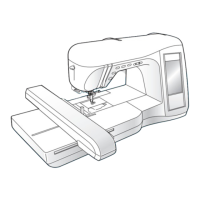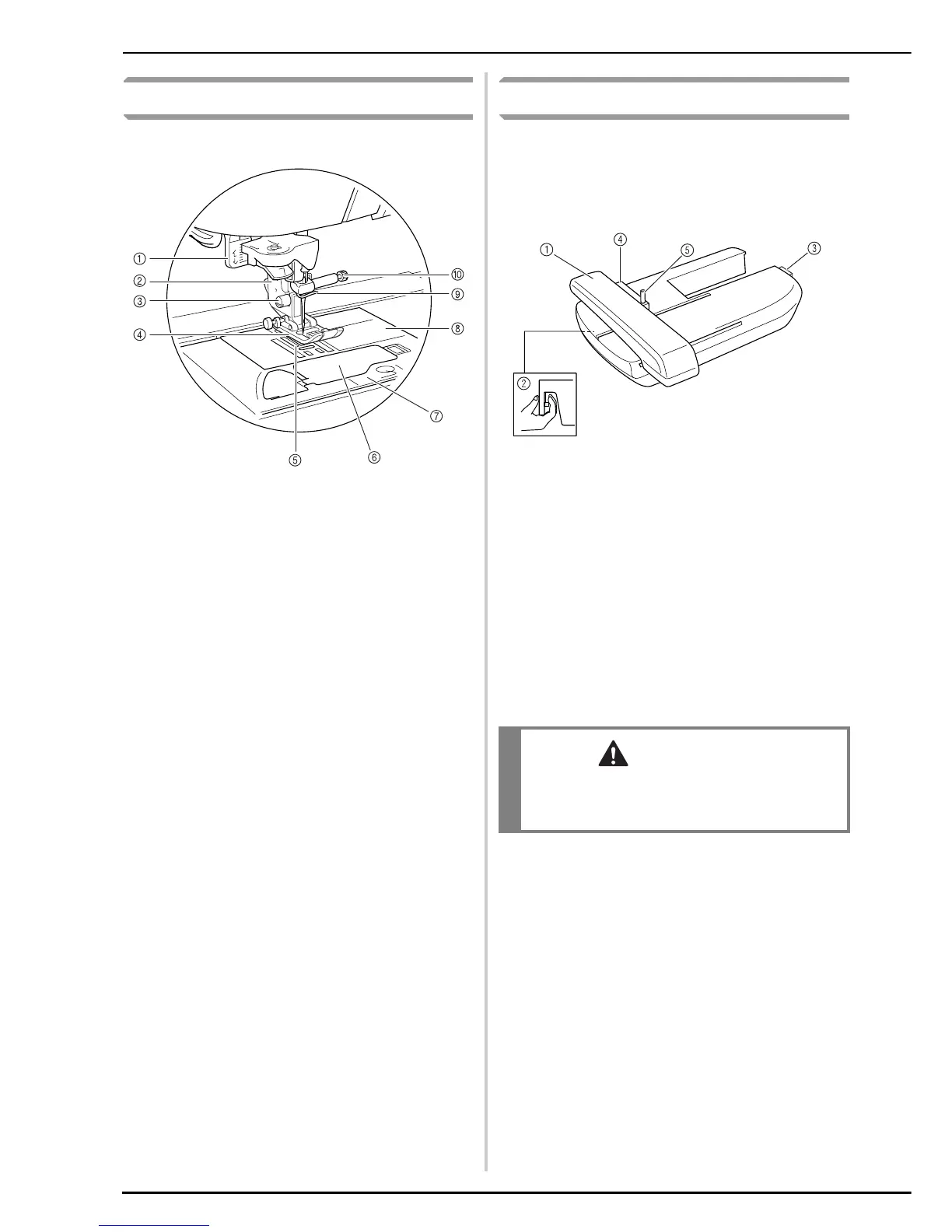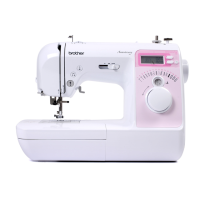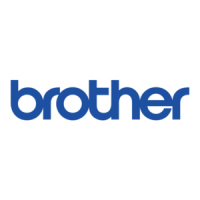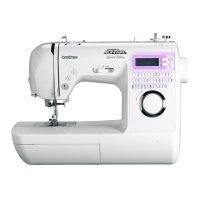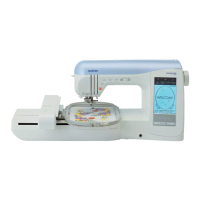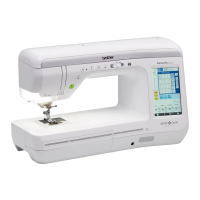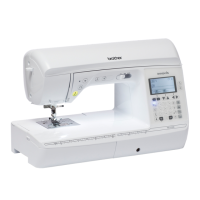NAMES OF MACHINE PARTS AND THEIR FUNCTIONS
10
Needle and Presser Foot Section
a Buttonhole lever
Lower the buttonhole lever when sewing buttonholes and bar
tacks.
b Presser foot holder
The presser foot is attached to the presser foot holder.
c Presser foot holder screw
Use the presser foot holder screw to hold the presser foot
holder in place.
d Presser foot
The presser foot consistently applies pressure to the fabric as it
is sewn. Attach the appropriate presser foot for the selected
stitch.
e Feed dogs
The feed dogs feed the fabric in the sewing direction.
f Bobbin cover
Open the bobbin cover to insert the bobbin.
g Needle plate cover
Remove the needle plate cover to clean the bobbin case and
race.
h Needle plate
The needle plate is marked with guides to help sew straight
seams.
i Needle bar thread guide
Pass the upper thread through the needle bar thread guide.
j Needle clamp screw
Use the needle clamp screw to hold the needle in place.
Embroidery Unit
a Carriage
The carriage moves the embroidery frame automatically when
embroidering.
b Release button (located under the embroidery unit)
Press the release button to remove the embroidery unit.
c Embroidery unit connector
Insert the embroidery unit connector into the connection port to
attach the embroidery unit.
d Embroidery frame holder
Attach the embroidery frame to the embroidery frame holder to
hold the frame in place.
e Frame-securing lever
Press down the frame-securing lever to secure the embroidery
frame.
CAUTION
• After the embroidery frame is set in the frame
holder, be sure the frame-securing lever is
correctly lowered.
